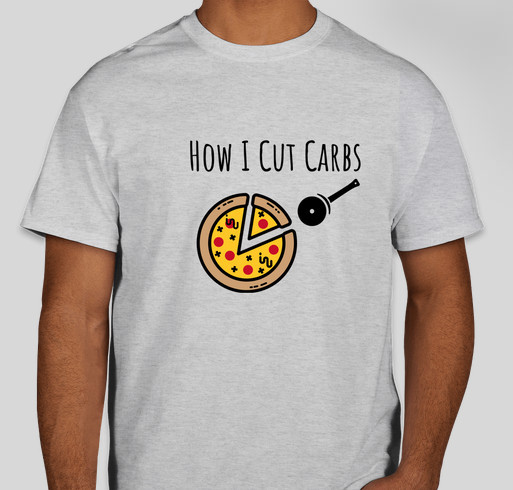Today @ MAND – March 2020
MA Dietitians Education Foundation T-Shirt Fundraiser
Buy a shirt (or two!) to help fund scholarships for future nutrition professionals. Visit https://www.customink.com/fundraising/MDEFscholarships to get your t-shirt(s).
Massachusetts Dietitians Education Foundation (MDEF) is in dire need of donations to its scholarship fund in order to continue providing yearly scholarships to worthy nutrition students and professionals looking to finish or further their nutrition education. We all remember how expensive our education was – let’s help offset this cost for future and current nutrition colleagues.
These T-shirts are 100% cotton and will have a beautiful screen-printed design in vibrant colors. The net proceeds from the purchase of these shirts will go directly to the MDEF scholarship fund. You can also make a direct donation if you do not want a shirt!
Visit https://www.eatrightma.org/page/massachusetts-dietetic-education-foundation-mdef to donate or learn more.
MAND Board Elections 2020
Elections for the 2020-2021 MAND board are now live! To vote, please visit https://www.eatrightma.org/members/election.cfm?id=5
Part Two: Plant Pigment Power of Phytonutrients and Vascular Health
By Jody Bergeron, MS, RN
Red Raspberries
The red raspberry (Rubus idaeus L) is high in fiber content providing 6.5gm per 100gm of fresh fruit. These little red gems also contain Vitamin C, magnesium, potassium, vitamin K, calcium and iron. The flavors and vivid colors of fruits and vegetables are in part related to their phytochemical/polyphenolic components. (3) The unique polyphenol profile of red raspberries is characterized by their anthocyanin and ellagitannin content. The anthocyanins have the chemical structure of C6-C3-C6 and they provide about 25% of red raspberry antioxidant capacity. The anthocyanins are what give the red raspberries their vibrant red hue. (3) Other fruits and vegetables that contain anthocyanins include: sweet cherries, strawberries, cranberries, apples (with skin), beets, red cabbage, red onion, kidney beans, and red beans. (5) In vitro and in vivo animal data research suggests red raspberries possess anti-inflammatory, antioxidative, and metabolic-stabilizing activities. It is ellagic acid, the primary breakdown product of ellagitannins, which appears to contribute to these effects. Some of the specific endpoints in the research on raspberries included: improved blood pressure and lipid profiles, less atherosclerotic development, improved vascular function, stabilization of uncontrolled hyperglycemia, and improved functional recovery from brain injury. (3) Raspberries are a great addition to smoothies and sauces and pair well with cottage cheese or yogurt as a snack. Add red raspberries to top off pancakes, waffles, hot or cold cereals, cakes, puddings and salads.
Resveratrol
The phenolic compound resveratrol, structurally a stilbenoid, was first isolated in 1939 from the roots of the white hellebore (Veratrum grandiflorum). (2) Resveratrol is also found in grapes, wines, apples, raspberries, blueberries, pistachios, plums, and peanuts. Japanese knotweed which has a high concentration of resveratrol is used in traditional Chinese medicine (TCM) in various tea products such as Itadori tea. (2) Resveratrol has known beneficial cardiovascular effects to include antioxidant, antihypertensive and coronary vasodilating activities. In addition, resveratrol was able to prevent collagen expression in cardiac fibroblasts and to protect against drug-induced cardiotoxity. (2) There are also neuroprotective effects seen with this polyphenol. Resveratrol has shown protection against neuronal damage and ammonia toxicity, suppression of depression, improved cognitive dysfunction, and increased abilities in spatial learning and memory. As I pour a glass of Pinot Noir… Can we justify the French paradox by drinking more red wine or consuming specific foods and beverages that are high in resveratrol? Although red wine does contain more resveratrol as compared to its white counterparts the answer is no. It is impossible to consume the recommended therapeutic dose of 1Gm/day by wine or other dietary sources. The majority of beneficial effects are seen in preclinical data and therefore clinical trials are needed. Another challenge to overcome is the low bioavailability of this polyphenol after oral intake.
Blueberries
Blueberries may be small in size but what they lack in size they compensate for in their powerful phytonutrient punch. We often hear the term super food when it comes to these blue gems. Unfortunately no one food has super powers, but the health benefits of these berries are derived from those anthocyanin flavonoids. What is it that gives blueberries their red, blue, and purple color variations? It is the anthocyanin content and blueberries are among the highest sources of this in common fruits. (4) Anthocyanins (Greek anthos = flower and kyáneos = blue) are polyphenolic pigments of red-orange to blue-violet hues present in fruits, flowers, and leaves. Although anthocyanins are not an essential nutrient their value may be to promote health homeostasis throughout the life span. (6) Consistent intake of a variety of colorful fruits and vegetables is a key component to a healthy lifestyle. Deaths from cancer, ischemic heart disease and stroke are among some of the estimated 1.7 million global deaths due to low intake of fruits and vegetables. “In 3 cohort studies, a higher anthocyanin intake was associated with a ∼25% reduced risk of coronary artery disease, including fatal and nonfatal myocardial infarction.” (4) Individuals with hyperlipidemia have had a beneficial effect on LDL cholesterol in randomized controlled trials utilizing purified and/or anthocyanin-rich extracts. (4) The protection of the vasculature from blueberries can be seen by vascular responsiveness, blood pressure, and arterial stiffness. Nitric Oxide metabolism and effects on endothelium composition and plasma lipids are all possible beneficial effects seen. There is also research looking into how nonflavonoid components of berry anthocyanins could interact with the gastrointestinal microbiota to elicit anti-inflammatory or other responses that contribute to cardioprotective properties. (4) In the Nurse’s Health Study, a prospective analysis revealed that a greater intake of blueberries and strawberries was associated with approximately a 2.5 year slower rate of cognitive decline in older adults. One clinical neuroscience study showed improved cognitive performance in elderly adults after a 12 week period of daily consumption of blueberry or Concord grape juice. (4) In Europe and Asia chokeberries and bilberries both high in anthocyanins have been recommended for treatment of atherosclerosis and chronic venous insufficiency. Interestingly, in World War II British fighter pilots were given bilberry jam to improve their nighttime vision. Other food sources rich in anthocyanins include: blackberries, blackcurrants, and elderberries. In the food industry there is an increased utilization of anthocyanins as an alternative to the red and blue synthetic colorants. (6) It can be said that a daily intake of 1/3 cup of blueberries or the equivalent of 50mg of anthocyanins cannot hurt and may mitigate chronic disease risk. (4)
How can we increase our phytonutrient intake?
Try a new plant food each week to increase variety and aim for 9-13 servings of plant foods daily. Did you know that there are purple varieties of certain vegetables like bell pepper, carrots, potatoes, and cauliflower? These varieties are more phytonutrient dense compared with their original form. (5) For instance, try putting turmeric with black pepper together with olive oil which can enhance the phytonutrient effects of all three foods (synergistic effect). Also adding lemon juice to spinach can increase the iron absorption in the body. Make nutrient dense substitutions like using mashed purple or sweet potatoes instead of regular mashed or try replacing plain white rice with purple, brown or black varieties. (5) The addition of a small amount of pumpkin puree to scrambled eggs gives them added a wonderful color and added nutrients. A morning breakfast smoothie can be made with various combinations of berries, vegetables, milk/yogurt/kefir and spices and is a great way to start the day or have as a mid-morning or afternoon snack. Be generous with fresh herbs and spices. Ginger is a fragrant spice with many anti-inflammatory compounds and is a great addition to smoothies, marinades, tea, baked goods and stir-fries. Pomegranates are now in season and contain a key component to assist your liver in the removal of toxins, namely ellagic acid. (5)
When we consider the Mediterranean dietary pattern two star players include the avocado and olive both of which contain phytosterols which help to block the absorption of cholesterol from food in the gut. One whole avocado has more potassium than a banana and a significant amount of fiber. Olives and olive oil contain hydroxytyrosol, oleuropein, and oleocanthal which are compounds that promote cardiovascular health. (5) With the holiday season upon us, a glass of Merlot with dinner, a cozy cup of chamomile, mint or rooibos tea or cocoa by the fire may be in order. Dark chocolate cocoa phytonutrients help in keeping blood vessels healthy, which can be beneficial for the brain and heart. A key takeaway is that the chocolate products are not high in sugar or contain milk and other added preservatives. For instance, you can use baker’s chocolate (100% cocoa), melt it down, and add your own sweetener like maple syrup. Moderate alcohol consumption (1 drink for females and 2 for males) can be a part of a healthy eating pattern according to the 2015 Dietary Guidelines Advisory Committee. (1) Chamomile, mint and rooibos teas do not contain caffeine, have antioxidants to curb inflammation and can promote sleep and relaxation. It is common to get into the habit of consuming the same foods over and over again. An estimated 80% of people are missing out on one or more phytonutrient colors. Make it a goal to eat the full spectrum (try for 7 colors) of the rainbow and maximize synergistic combinations. Your vascular endothelium, heart and brain will thank you!
References:
- Johnson, Sarah A. et al. Age-Related Vascular Dysfunction: What Registered Dietitian Nutritionists Need to Know Journal of the Academy of Nutrition and Dietetics, Volume 119, Issue 11, 1790 – 1796 < https://jandonline.org/article/S2212-2672(18)32071-9/fulltext>
- Sabine Weiskirchen, Ralf Weiskirchen, Resveratrol: How Much Wine Do You Have to Drink to Stay Healthy?, Advances in Nutrition, Volume 7, Issue 4, July2016, Pages 706–718 < https://www.ncbi.nlm.nih.gov/pubmed/?term=Resveratrol%3A+How+Much+Wine+Do+You+Have+to+Drink+to+Stay+Healthy%3F>
- Britt M Burton-Freeman, Amandeep K Sandhu, Indika Edirisinghe, Red Raspberries and Their Bioactive Polyphenols: Cardiometabolic and Neuronal Health Links, Advances in Nutrition, Volume 7, Issue 1, January 2016, Pages 44–65 < https://www.ncbi.nlm.nih.gov/pubmed/26773014>
- Wilhelmina Kalt, Aedin Cassidy, Luke R Howard, Robert Krikorian, April J Stull, Francois Tremblay, Raul Zamora-Ros, Recent Research on the Health Benefits of Blueberries and Their Anthocyanins, Advances in Nutrition July 2019 < https://academic.oup.com/advances/advance-article/doi/10.1093/advances/nmz065/5536953>
- Phytonutrient Spectrum Comprehensive Guide. 2014 The Institute For Functional Medicine. The Health Edge. < http://www.thehealthedgepodcast.com/wp-content/uploads/2015/07/Phytonutrient-Spectrum-Comprehensive-Guide.pdf>
- Taylor C Wallace, M Monica Giusti, Anthocyanins, Advances in Nutrition, Volume 6, Issue 5, September 2015, Pages 620–622 https://academic.oup.com/advances/article/6/5/620/4616693
Jody Bergeron, RN, BSN, MS, CEN, works in critical care for Cape Cod Healthcare. She obtained her Masters in Human Nutrition from the University of Bridgeport and was enrolled at the University of Alabama’s College of Human Environmental Sciences Online Dietetics program. She has 30 years of experience working in healthcare with the past 20 years in critical care nursing. She served 9 years in the Army Reserve as a military officer in a Combat Support Hospital as a critical care RN. During her service she was in charge of the weight control program. She currently has interests in phytonutrient research, disease prevention with a focus on heart and brain health and healthy aging. She enjoys time with her family, skiing, scuba diving, traveling, knitting, cooking/baking/recipe development, and sharing science based nutrition information on social media and food photography. Instagram: @jody_bergeron Twitter: @BergeronJodyA
Member Spotlight
JOB OPPORTUNITIES
Dietitian - Early Intervention - Part Time Riverside Community Care Love What You Do! Dietician - Early Intervention Great opportunity to join Riverside Community Care as a Dietician for our Early Intervention Program! In this vital.. Read more >
MDEF Scholarships
For 2025, MDEF will be giving out two MDEF scholarships and one MDEF Inclusion, Diversity, Equity, and Access (IDEA) scholarship to deserving nutrition students, each in the amount of $1500. Please pass along to any nutrition students or interns who may be eligible to apply! Click here to apply.
All applications are due by May 31st



